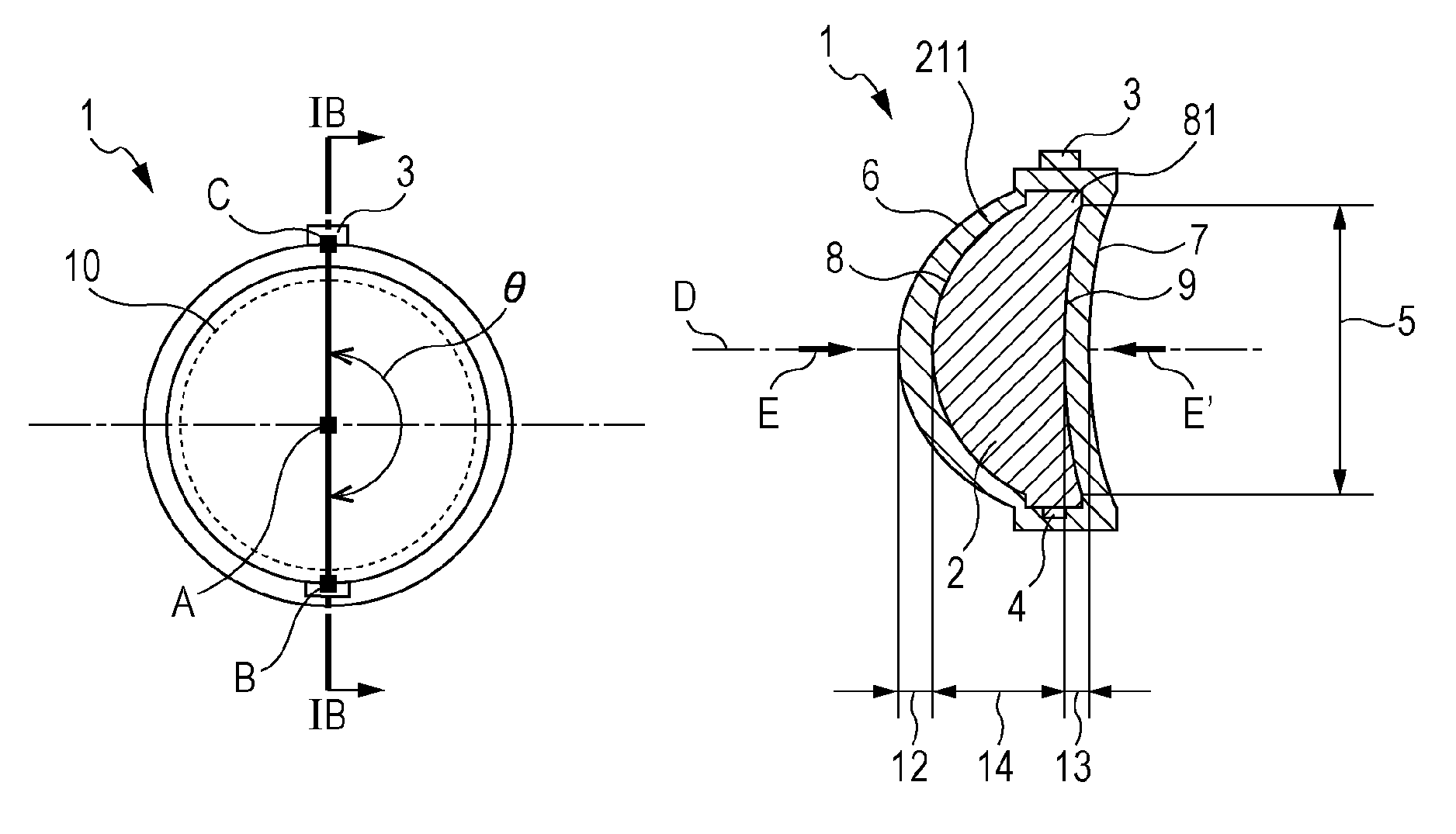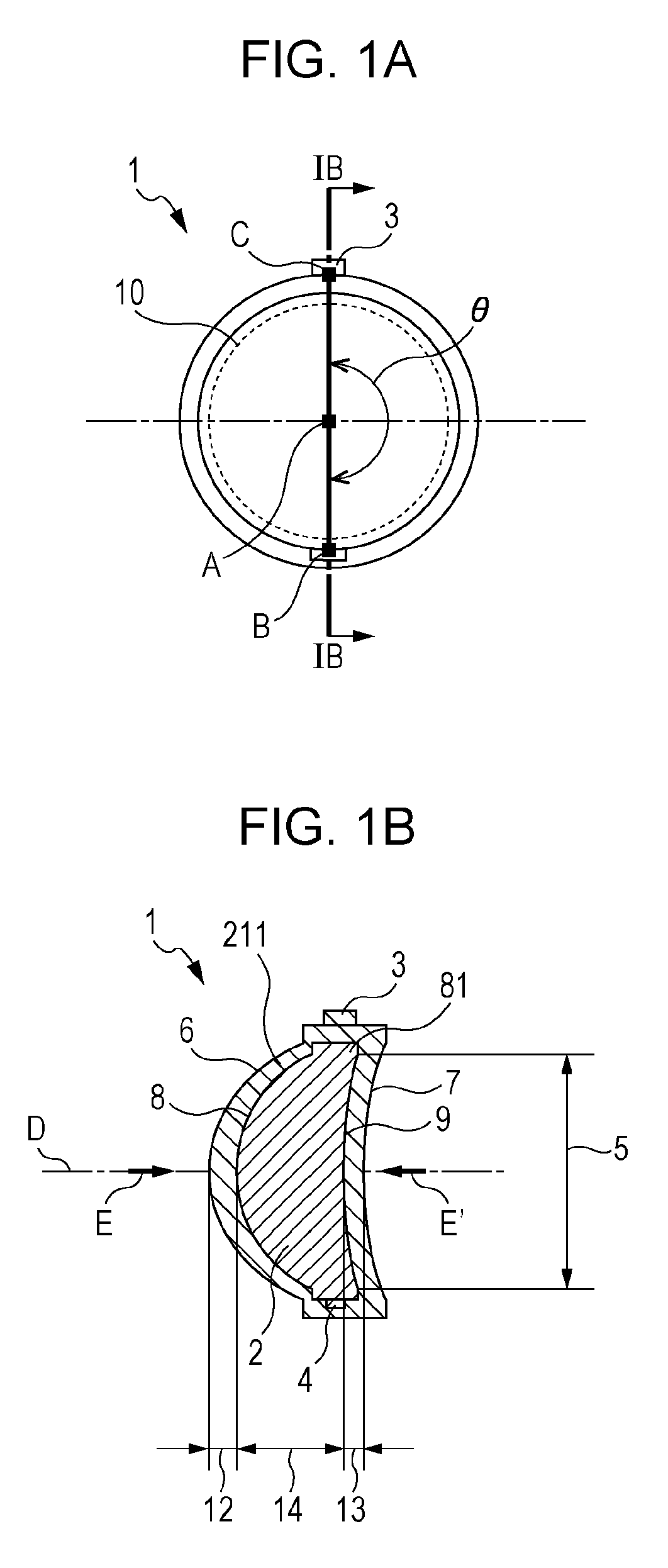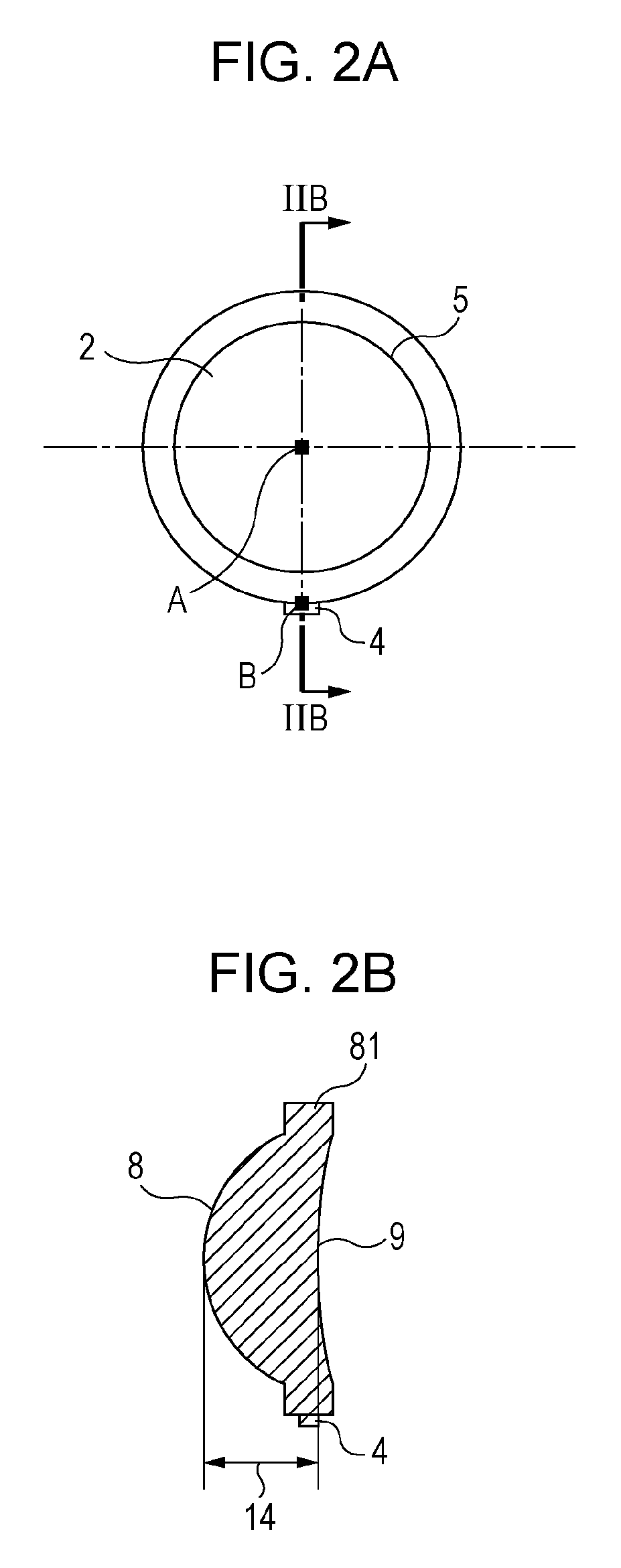Plastic optical element and method of making the same
a technology of optical elements and plastics, applied in the field of plastic optical elements, can solve the problems of reducing the efficiency of optical elements, reducing the cost of optical elements, and reducing the amount of molds required to cool such thick optical elements, so as to reduce the birefringence
- Summary
- Abstract
- Description
- Claims
- Application Information
AI Technical Summary
Benefits of technology
Problems solved by technology
Method used
Image
Examples
first embodiment
[0022]A plastic optical element according to a first embodiment of the present invention and a method of making the same will be described.
[0023]The plastic optical element according to the present embodiment will now be described with reference to FIGS. 1A and 1B. FIG. 1A is a plan view of the plastic optical element when viewed in a direction along its optical axis (also referred to as the “optical axis direction”) and FIG. 1B is a cross-sectional view thereof taken along the line IB-IB in FIG. 1A. The plastic optical element according to this embodiment includes a core lens 2 and a molded portion 211, serving as a plastic coating, disposed on the core lens 2. FIGS. 2A and 2B are diagrams explaining the core lens 2. FIG. 2A is a plan view of the core lens 2 when viewed in the optical axis direction and FIG. 2B is a cross-sectional view thereof taken along the line IIB-IIB in FIG. 2A. The same parts and components in FIGS. 2A and 2B as those in FIGS. 1A and 1B are designated by the...
second embodiment
[0039]A plastic optical element according to a second embodiment of the present invention and a method of making the same will be described below.
[0040]FIG. 5A is a plan view of the plastic optical element according to this embodiment when viewed in the optical axis direction. FIG. 5B is a cross-sectional view thereof taken along the line VB-VB in FIG. 5A. The same parts and components as those in FIGS. 1A to 2B are designated by the same reference numerals and detailed description thereof is omitted. A rib 15 for divergent coating is provided for the gate corresponding part of the molded portion of the plastic optical element 1 in order to pour plastic for coating into the cavity. In this embodiment, the angle θ formed by the line segment AB and the line segment AC is set in the range of 90 degrees to 180 degrees when viewed in the optical axis direction in a manner similar to the plastic optical element 1 according to the first embodiment. Consequently, the combination of birefrin...
example 1
[0049]In this example, plastic optical elements were made such that the formed angles θ were 180 degrees, 135 degrees, and 90 degrees, and the relationship between birefringence of each plastic optical element and the formed angle θ was determined. As regards measurement of birefringence, the following method was used. Each plastic optical element was disposed between two polarizers (a polarizer and an analyzer), a single-wavelength light beam was applied to the plastic optical element from the side adjacent to the polarizer, the plastic optical element was turned by 360 degrees about its optical axis while the polarizer and the analyzer were held in parallel nicols, and a phase shift was obtained at that time from the angular dependence of the intensity of transmitting light. Measurement was performed using an instrument manufactured by Oji Scientific Instruments.
[0050]First, the plastic optical elements were produced. The plastic optical elements were made using the method describ...
PUM
| Property | Measurement | Unit |
|---|---|---|
| angles | aaaaa | aaaaa |
| formed angle | aaaaa | aaaaa |
| formed angle | aaaaa | aaaaa |
Abstract
Description
Claims
Application Information
 Login to View More
Login to View More - R&D
- Intellectual Property
- Life Sciences
- Materials
- Tech Scout
- Unparalleled Data Quality
- Higher Quality Content
- 60% Fewer Hallucinations
Browse by: Latest US Patents, China's latest patents, Technical Efficacy Thesaurus, Application Domain, Technology Topic, Popular Technical Reports.
© 2025 PatSnap. All rights reserved.Legal|Privacy policy|Modern Slavery Act Transparency Statement|Sitemap|About US| Contact US: help@patsnap.com



